
Homeowners can enclose their porches in a few different ways—each having their own price tag. Learn what contributes to the total cost to enclose a porch and how you can reduce the bill.
Every type of sunroom under the sun


A local sunroom contractor can help you pick the best sunroom for your budget and house size.
Factors to consider when choosing a sunroom design include sun exposure, ventilation, privacy, and usability.
Solariums and conservatories are some of the least expensive options, but since they’re made of glass, they offer minimal privacy.
For more ventilation, you could choose a screened-in porch (aka an Arizona room), which has screens instead of glass.
Four-season rooms are the priciest type of sunroom, but they add the most resale value to your home.
Adding a sunroom to your home can add living space and utility, not to mention that it can also increase your property value. While adding one may be a no-brainer, choosing the right type of sunroom is a bit more complicated. There are six main types of sunrooms: solariums, conservatories, greenhouses, screened-in porches, three-season rooms, and four-season rooms. In this guide, we’ll explain the differences between them and help you decide which is right for your home.
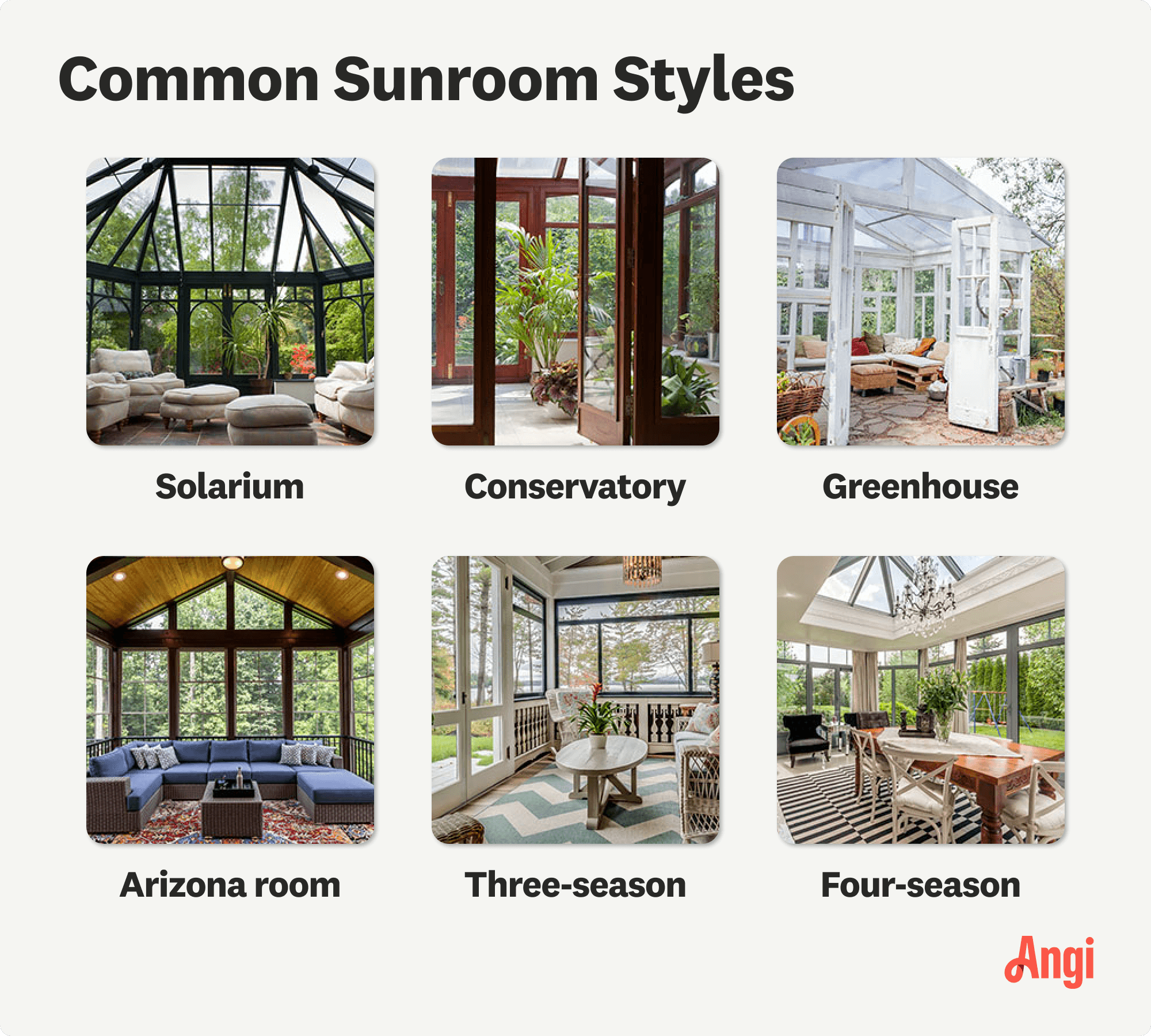
A solarium is an extension on your home that has walls and ceilings made entirely of glass. Solariums are ideal for getting the maximum amount of sunlight without having to deal with bugs and sunburn. Since the structure is entirely glass, there’s no insulation, which means a solarium is normally only usable during the warmer months. Solariums can include operational windows to allow for airflow, too.
| Pros | Cons |
|---|---|
| Maximum sunlight | No insulation |
| Minimum privacy | No heating/cooling |
| Clear view of nature | High maintenance |
Best for: Homeowners who want to feel like they’re out in the open sun but don’t want to deal with bugs
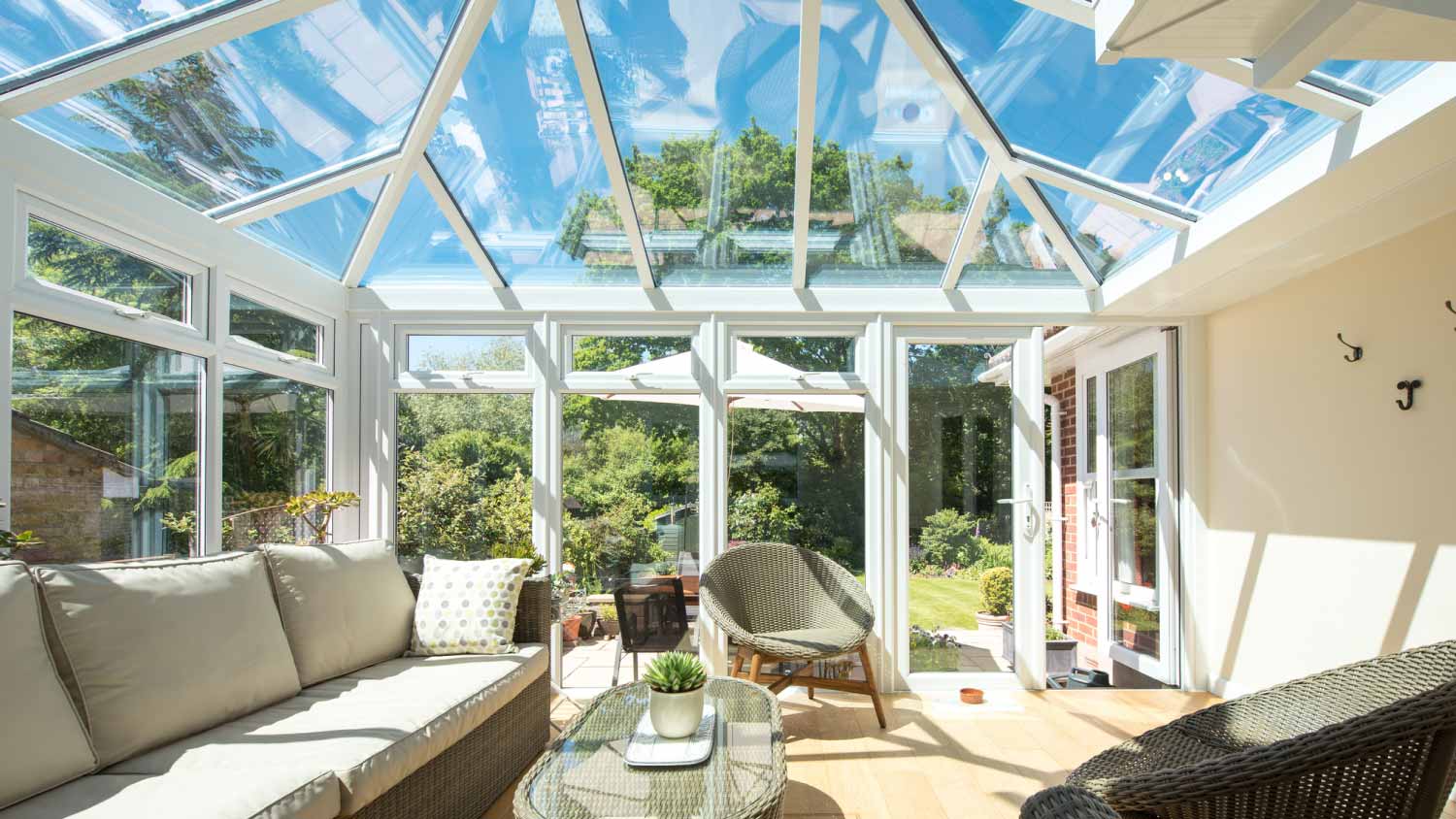
A conservatory is similar to a solarium in that it’s made mostly of glass. However, conservatories are more likely to incorporate other building materials, like brick walls or posts, and feature a more ornate design. Conservatories have finished flooring and can include operational windows just like a solarium. The other building materials and window decor can reduce the view of nature, although it can also improve privacy. Conservatories have a more traditional and upscale appearance than solariums.
| Pros | Cons |
|---|---|
| High-end look | Expensive |
| Lots of sunlight | Minimal privacy |
| Clear view of nature | No heating/cooling |
Best for: Homeowners who want to maintain a high-end appearance and maximize home value
A greenhouse is a far more primitive type of sunroom, as it doesn’t have a finished floor. Instead, you’ll find bare grass or pavers serving as the floor. Its primary purpose is to provide a sunny space to grow plants, although some homeowners add an outdoor table to create some space for entertaining. Greenhouses are constructed mostly of glass, plastic, or fiberglass, so they maximize sunlight and provide minimal privacy.
| Pros | Cons |
|---|---|
| Ideal for plants | Minimal privacy |
| Most affordable | No heating/cooling |
Best for: Homeowners who want a space dedicated to protecting plants from harsh weather
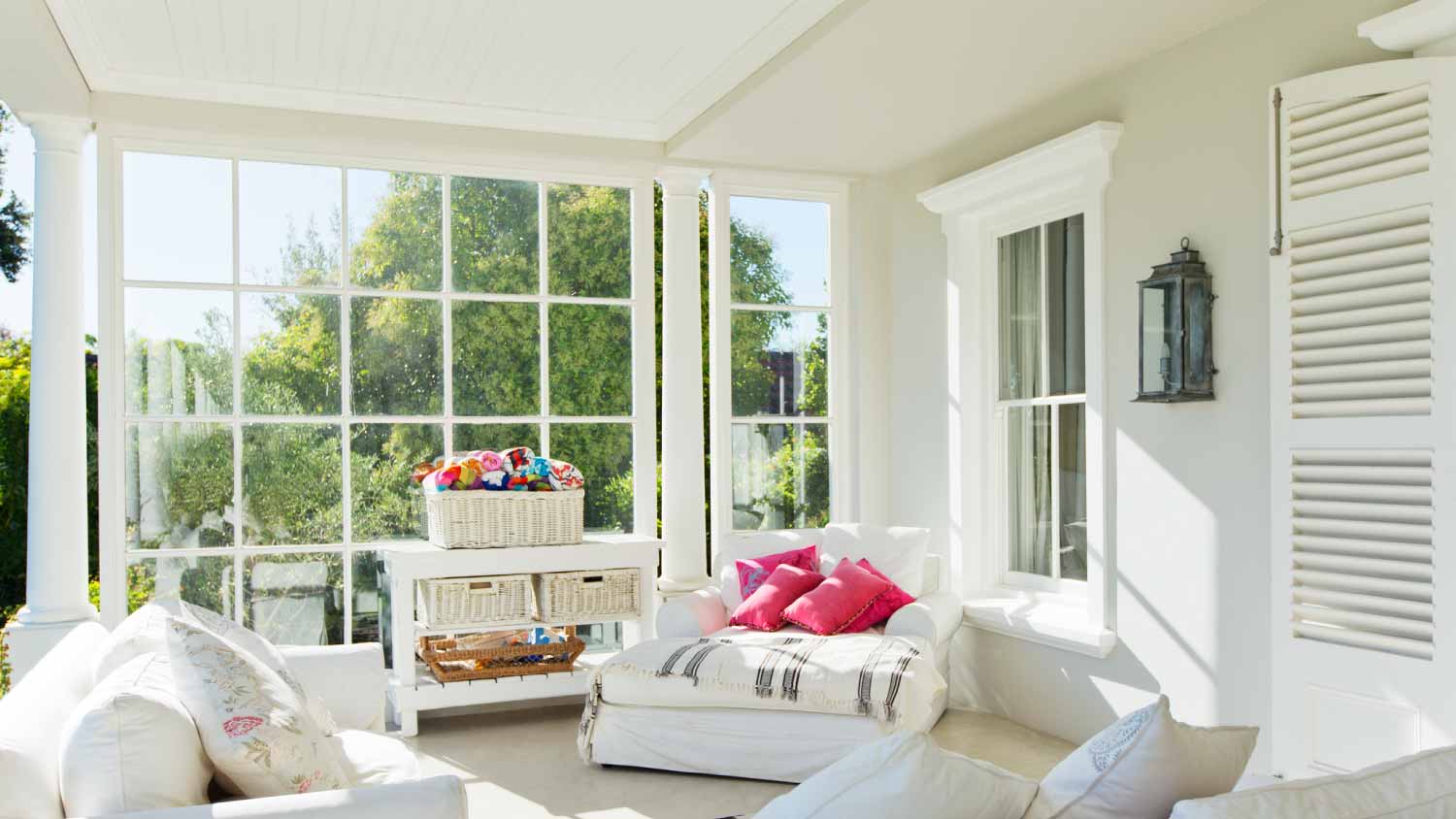
An Arizona room, also called a sun porch or screened-in porch, is a type of sunroom that maximizes ventilation, so it’s ideal for homeowners who want to enjoy fresh air and views of nature, even when the weather isn’t ideal. Screened-in porches don’t have glass walls, but the screens still let in tons of sunlight, and you can choose a roof made of glass or a traditional roof with skylights to maximize light.
Since the walls aren’t closed off, it’s not possible to insulate, heat, or cool sun porches, so the use you get out of them depends heavily on the climate in your area.
| Pros | Cons |
|---|---|
| Maximum ventilation | No heating/cooling |
| Relatively affordable | Minimal privacy |
| Clear view of nature | Climate dependent |
Best for: Enjoying fresh air and sunlight without the bugs
A three-season room, sometimes called a Florida room, gives you partial access to the outdoors for three of the four seasons: spring, summer, and fall. It differs from most other sunrooms in that it includes full walls surrounding windows and doors and a traditional roof, so you generally get less sunlight than you would in other types of sunrooms.
Three-season rooms cost more than most other types of sunrooms, too, because they include electrical connections and may have ceiling fans or ductless units to cool the space in the hotter months. They’re fully finished interior spaces but lack insulation and/or heating, so they’re usually too cold to use comfortably in the winter.
| Pros | Cons |
|---|---|
| More utility | Expensive |
| Cooling equipment | No heating |
| Good privacy | Less sunlight |
Best for: Homeowners who want a sunny but private area to entertain for most of the year
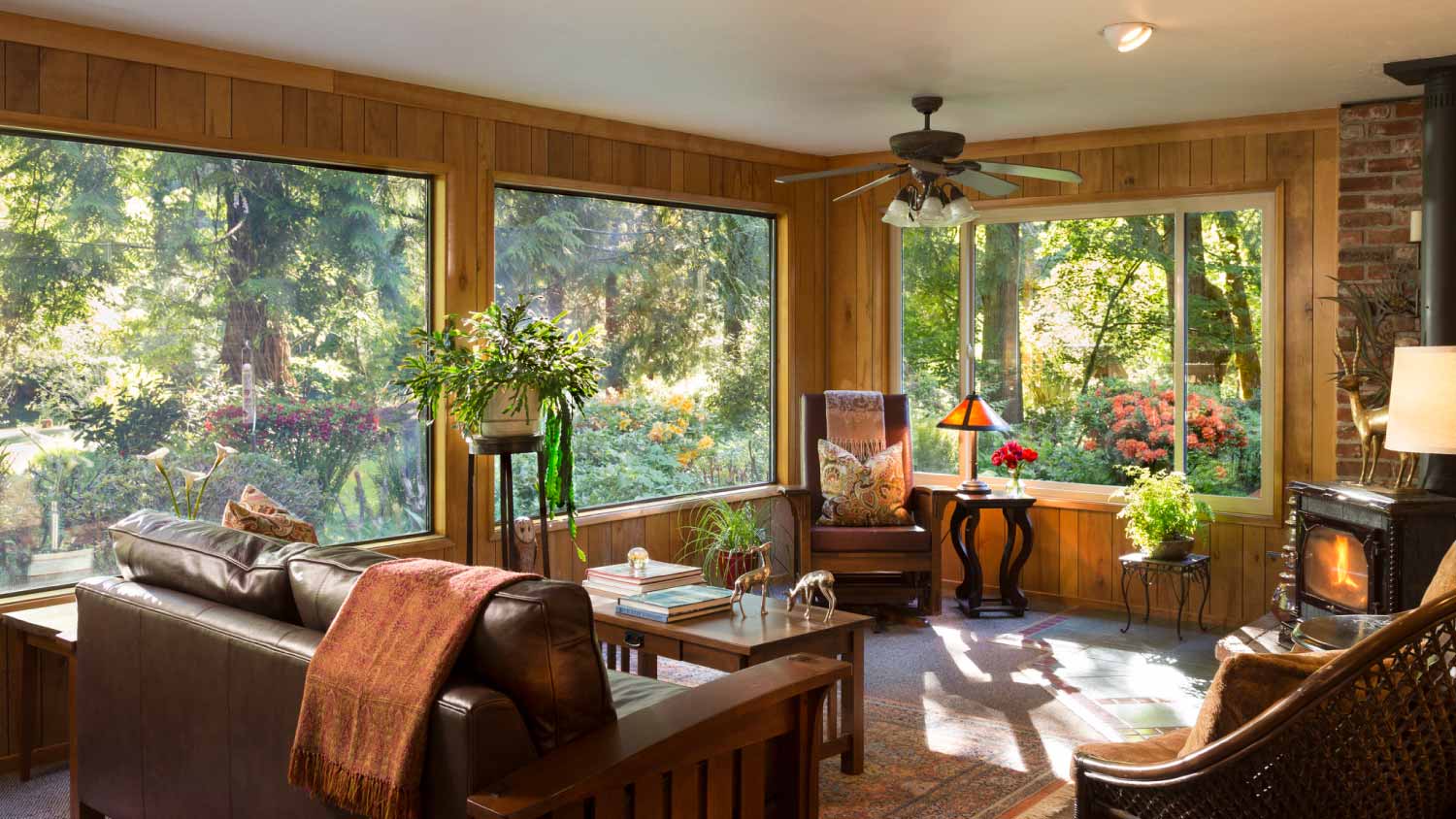
A four-season room is similar to a three-season room in that it’s a sunroom that’s more like a traditional home addition with standard walls, windows, doors, and electrical connections. However, four-season rooms have insulated walls and heating systems, so you can enjoy the sun-filled space year-round in complete comfort.
Four-season rooms are the most expensive type when hiring a pro who installs sunrooms, but you also get the most use out of this option. If you’re looking to add to your living space and maximize the bump in home value, this is the best route to go.
| Pros | Cons |
|---|---|
| Usable year-round | Most expensive |
| Maximum value add | Less sunlight |
| Good privacy | Longest installation |
Best for: Homeowners looking for added living space
There are a few important things to think about before choosing what type of sunroom will suit you and your home best.
The primary purpose of a sunroom is, of course, to give you and your family access to the sun and the outdoors while still remaining protected from bugs and inclement weather. The different types of sunrooms vary in how much sun they provide. Greenhouses and solariums have minimal interruptions in their all-glass construction and provide the most sun. Conservatories provide slightly less in most cases, although it depends on the construction and design.
Screened-in porches offer less sun exposure, as they often have traditional roofs that block sunlight from above. Three-season rooms and four-season rooms provide the least amount of sun exposure.
Enjoying the outdoors means getting sunlight and fresh air, so consider how well ventilated each type of sunroom is, too. A screened-in porch offers the most access to fresh air, followed by greenhouses, solariums, and conservatories with operable windows. Three-season and four-season rooms are the most closed off but can still introduce fresh air through windows.
Make sure you consider whether you or your family members have allergies to pollen. Choose a sunroom with closable windows over a screened-in porch to maintain control over the ventilation and exposure to allergens.
Privacy might be important if you don’t have a fence, trees, or shrubs separating your yard from your neighbor’s yard. Solariums and conservatories, greenhouses, and screened-in porches offer minimal privacy, while three-season and four-season rooms can be as private as your main living space. It’s possible to add window coverings in the less private types of sunrooms, but you’ll get less sunlight as a trade-off.
Think about how you want to use your sunroom before deciding which type is best. An avid gardener who enjoys entertaining outdoors may benefit most from a greenhouse, while someone looking for flexible living space that could double as a guest room in a pinch will prefer a completely finished four-season room. How you plan to use the space can also inform the size of the sunroom you choose and how you position it on your property.
Think about how each type of sunroom will add to your home value if you’re considering relocating in the next few years. Finished living space like a four-season room will usually add the most to your home value, while a greenhouse will usually add the least. Your location plays an important role in utility and added value, so think about the climate in your area and what type of sunroom would be the most enjoyable to use.
The average cost to install a sunroom is $47,000, and most homeowners pay somewhere between $22,000 and $72,600. Three-season and four-season rooms will cost the most, sometimes up to $80,000. Solariums, conservatories, and greenhouses are the most affordable options and can cost as little as $5,000. Consider your budget carefully before choosing a style and hiring a sunroom contractor near you.
This is a small family owned company that will give you excellent service.
A very good company to work with: professional, reasonably priced, and willing to go above and beyond to satisfy the customer. We had rotted wood and new aluminum roof trim installed, and the result is perfect and done on time. I definitely recommend them and will certainly use them for...
I know Chris and is family business for long time , they are the best and very professional, on time and easy with quality work
The service was excellent! Norwin's trap caught the dangerous bob cat in short order. I am very thankful!
C J, Maria and her crew did a great job of advising and installing the patio. It looks great and we're both very happy with the result. I highly recommend them for stamped concrete or other materials for building patios.
Brandon Burnette did such a great job. I'm so happy I had him as my worker today. Very nice and friendly young man. 10 star in my book.
We had Brandon from DeMarks come out and power wash our siding. The house is 26 years old and had never been washed before. I can not say enough about how hard he worked to get every inch of the house sparkling clean. Not only did he wash the siding, but the soffit, fascia, and gutters as...
We had LHR install a new roof and gutter system. While they were not the cheapest, they were considered the most reliable and fetish for using only high-value products that would last for many years. Additionally, they were highly professional and never tried to push their services or any...
Professional, perfectionists, reasonable price and delivered a flawless patio within the project timeline. Johnny Vu and his masonry Fabian Chavez are experts in flagstone patio. Excellent work delivered!
The crew showed up on time and finished the home theater installation as promised. The guy in charge of the team made sure it was done correctly, right down to the smallest detail. Highly recommended!
From average costs to expert advice, get all the answers you need to get your job done.

Homeowners can enclose their porches in a few different ways—each having their own price tag. Learn what contributes to the total cost to enclose a porch and how you can reduce the bill.
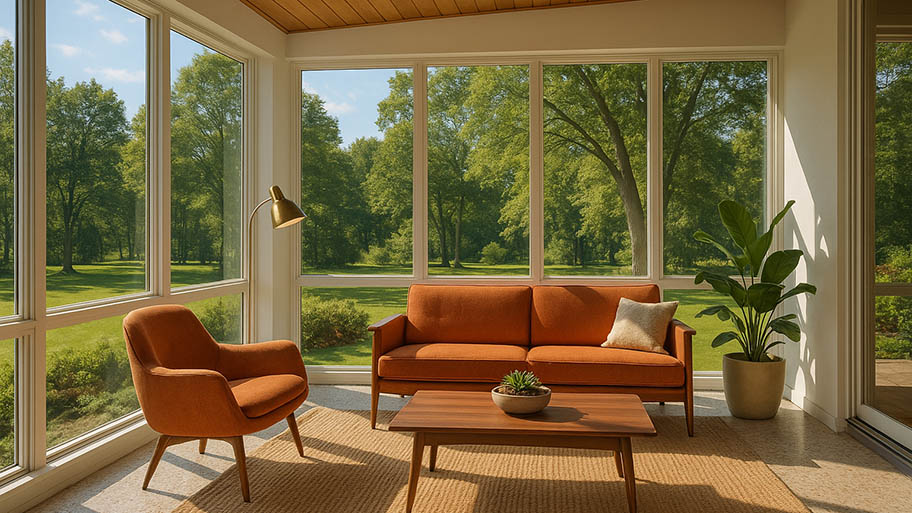
When you're ready to kick back and enjoy nature without the bugs, a sunroom is your best option. Learn how much a sunroom addition costs to set your budget.
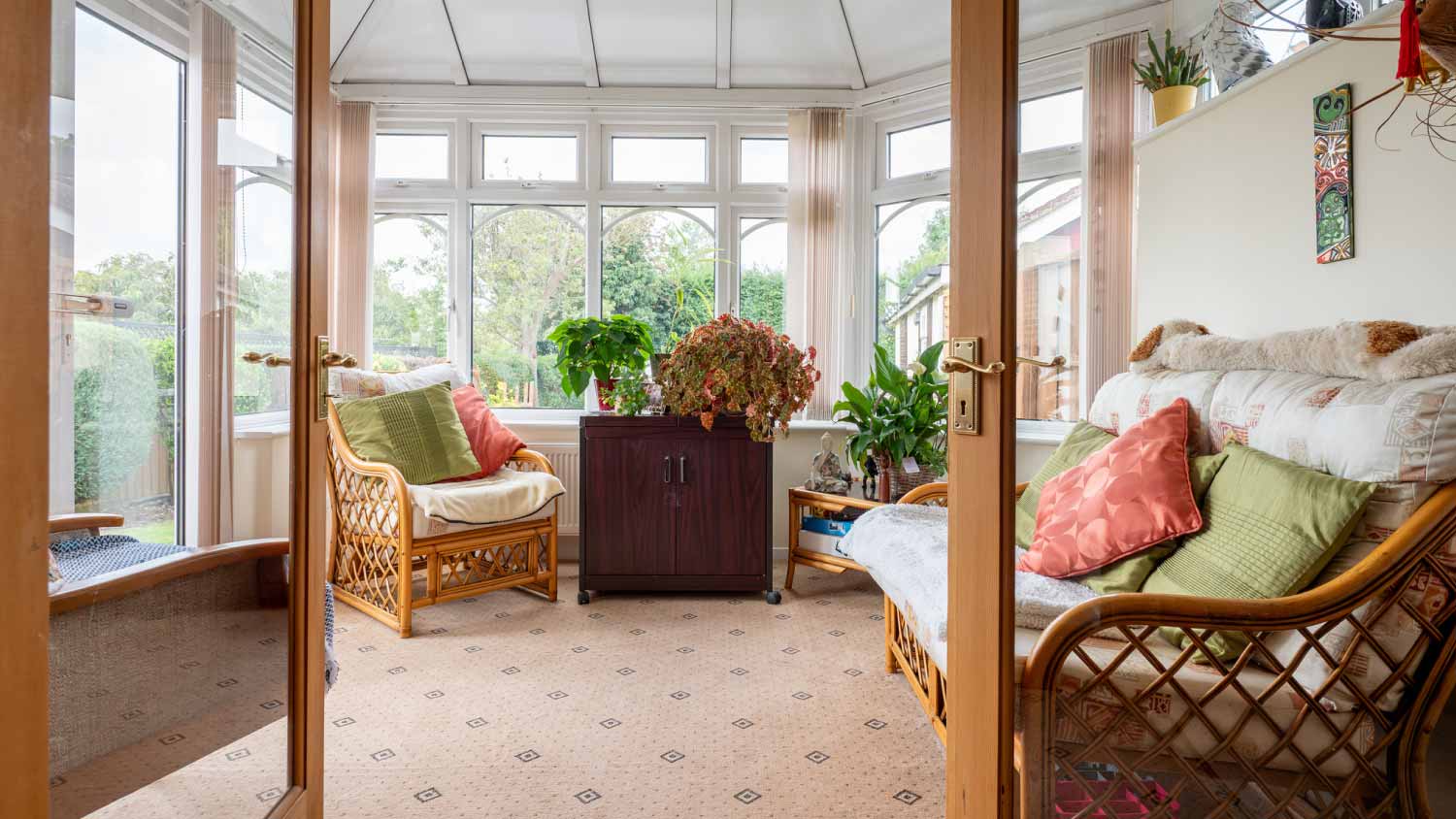
Love soaking up sun but can’t stand the bugs? Learn how much a Florida room addition costs and what factors influence the price to get the best of both worlds.

Have you had the bright idea to brighten up your living space? What exactly is a sunroom in a house, and is it right for you? Learn more in this guide.
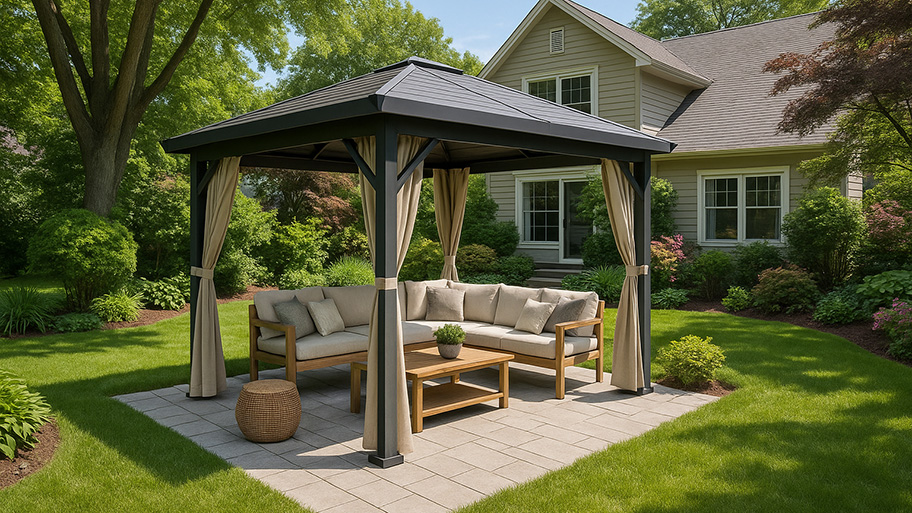
What is a gazebo? In short, it’s a shade structure that’s ideal for outdoor entertaining. Read this guide to learn more and decide if a gazebo is right for you.

Could your home use a little more light and space? Adding a sunroom may be the right move. Here's what you need to know.